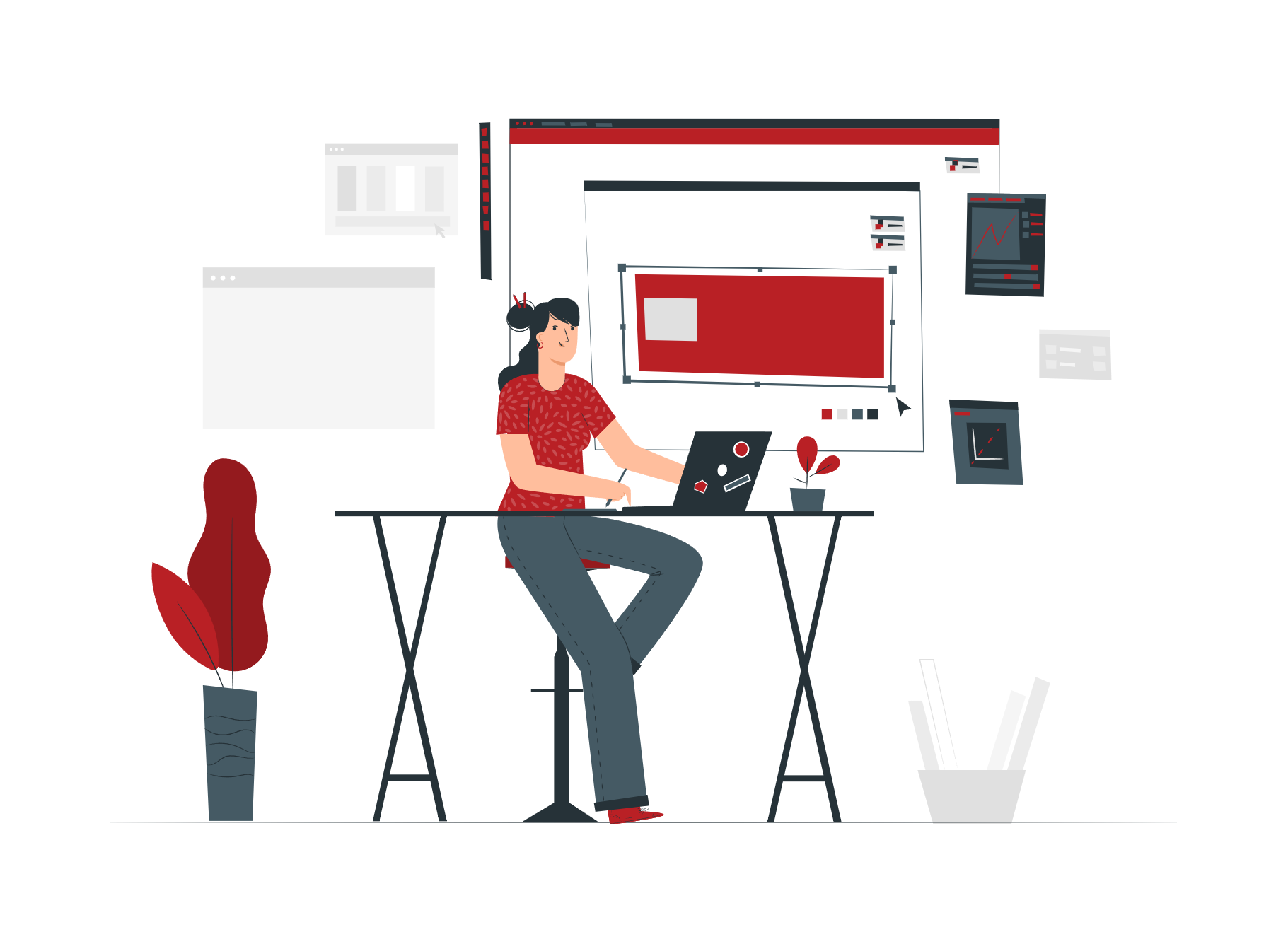
#1 Website Designing Company in Dwarka
Introduction In today’s digital age, having an excellent online presence is crucial for any business,
Experience the power of CodesFX’s portfolio, where effective web development and digital transformations turn into your Brand success stories. Discover it now!
Discover how businesses shine with CodesFX. Our portfolio showcases success stories that drive visibility and growth. Explore projects, witness the impact, and envision your brand’s success with CodesFX – your partner for impactful Web development and Digital Marketing solutions.
Explore the stories of businesses that found success with CodesFX Web Development and Digital Marketing services. Our clients share how our expertise in services has boosted their online presence, attracting more customers and driving tangible results. Discover the power of partnering with CodesFX for all digital solutions that deliver real impact and lasting success.






Unlock the potential of your online presence! Embrace success with CodesFX’s powerful Web Development and Digital Markteing solutions. Take the first step towards increased create visibility, leads, and conversions. Elevate your brand and dominate search engine results. Seize the moment and experience unparalleled growth – choose CodesFX for Digital excellence.
Explore the logos of esteemed brands that have thrived with CodesFX web development and digital marketing services. Our proven strategies position brands at the forefront. Join satisfied clients and boost your online presence with CodesFX.

Introduction In today’s digital age, having an excellent online presence is crucial for any business,

Introduction In the fast-paced world of e-commerce, creating a website for royal women’s clothing requires
if you don’t read the news you’re uninformed if you need the news, you’re misinformed.
-mark twin
Get in touch and let me know how I can help. Fill out the form and I’ll be in touch as soon as possible.
Get detailed answers to common questions about our portfolio and services. Navigate your path to web success with CodesFX – your trusted guide for clear and effective solutions.
A portfolio in web development is a curated collection of a developer’s work, showcasing their skills, projects, and accomplishments. It serves as a visual resume that potential clients or employers can review to gauge the developer’s expertise, creativity, and the quality of their previous projects. A well-crafted portfolio is a powerful tool for establishing credibility and securing opportunities in the competitive field of web development.
Creating a web portfolio involves several key steps. Start by selecting a clean and user-friendly design for your website. Organize your projects logically, providing detailed descriptions and images for each. Highlight your skills, experience, and any notable achievements. Include a professional biography and contact information to make it easy for visitors to get in touch. Regularly update your portfolio with new projects to showcase your continuous growth and development.
For a web developer portfolio, showcase a diverse range of projects that highlight your technical skills. Include examples of responsive web design, front-end and back-end development, and any specialized frameworks or technologies you’ve mastered. Provide detailed explanations of your role in each project, the challenges you overcame, and the impact of your contributions.
A portfolio for a UI (User Interface) developer focuses on showcasing your expertise in designing visually appealing and user-friendly interfaces. Include examples of your design process, wireframes, mockups, and the final products. Highlight your understanding of user experience (UX) principles and how your designs enhance the overall usability of websites or applications.
To create an effective portfolio:
In web development, a portfolio is a comprehensive showcase of a developer’s skills, projects, and accomplishments. It visualizes their expertise, providing potential clients or employers with insights into their coding proficiency, design capabilities, and the scope of their previous work. A well-crafted web development portfolio is essential for establishing credibility and attracting opportunities.
Creating a digital marketing portfolio involves highlighting your expertise in various aspects of online marketing. Include case studies demonstrating successful campaigns and highlighting your SEO, social media management, content creation, and analytics skills. Showcase measurable results and emphasize your ability to drive online engagement and conversions.
A portfolio is crucial in showcasing your skills, experience, and accomplishments in a tangible and accessible format. It is a dynamic representation of your capabilities, allowing potential clients and employers to assess your suitability for a project or position. A well-constructed portfolio builds trust, establishes credibility, and sets you apart in competitive fields like web development and digital marketing.
Digital marketing portfolio examples should include a diverse range of projects and campaigns. Showcase your proficiency in creating compelling content, managing social media accounts, executing successful SEO strategies, and utilizing various digital marketing tools. Use visual elements, analytics data, and client testimonials to reinforce the impact of your work.
Design your portfolio with a clean and intuitive layout. Use a professional color scheme, readable fonts, and consistent branding. Prioritize user experience by ensuring easy navigation and quick access to your projects. Incorporate visual elements that reflect your personal style while maintaining a balance that keeps the focus on your work.
A good portfolio website is visually appealing, easy to navigate, and clearly communicates your skills and achievements. It should load quickly, be mobile-friendly, and showcase various high-quality projects. Regularly update the content to demonstrate your growth and adaptability to new technologies.
To create a portfolio PDF:
A design portfolio is crucial for showcasing your abilities to potential clients or employers. It provides tangible evidence of your skills, creativity, and experience, visually representing your professional identity. A compelling portfolio sets you apart in a competitive field, making a lasting impression on those who review it.
Design portfolios are utilized by various professionals, including graphic designers, web developers, UI/UX designers, and other creative individuals. Clients, employers, or collaborators often refer to portfolios to assess the quality of work and determine if a designer’s style aligns with their project requirements.
Yes, designers absolutely need a portfolio. A well-crafted portfolio is a powerful marketing tool that helps designers showcase their skills, build credibility, and secure opportunities. Whether you’re a freelancer seeking clients or a job seeker applying for design positions, a portfolio is an essential asset that demonstrates your capabilities and sets you apart from the competition.
Designing a portfolio website using HTML and CSS requires a clean and responsive layout. Ensure easy navigation and prioritize a user-friendly experience. Incorporate your personal brand elements, use high-quality images, and maintain consistency in color schemes and fonts. Optimize the website for mobile responsiveness to reach a broader audience.
Portfolio managers are financial professionals responsible for managing investment portfolios. They make strategic decisions to achieve financial goals, analyze market trends, assess risks, and optimize asset allocations. Portfolio managers aim to maximize returns while considering the client’s risk tolerance and investment objectives, ensuring a balanced and diversified portfolio.
Building a portfolio website involves several steps. Choose a platform or build from scratch using HTML, CSS, and potentially JavaScript. Select a clean and professional design, organize your projects logically, and include a clear navigation menu. Write concise project descriptions, highlight essential skills, and provide contact information. Regularly update for your portfolio to showcase your latest work and skills.
In the dynamic fields of web development and digital marketing, a well-crafted portfolio is an indispensable tool for professionals. It showcases your expertise and accomplishments and is a very powerful marketing tool to attract clients or employers.
Creating a portfolio website can be free or involve some costs, depending on your chosen platform and services.
Many website builders offer free plans with essential features and a subdomain (e.g., yourname.buildername.com). These plans are suitable for individuals on a budget or just starting their careers. Popular free website builders include Wix, Weebly, and WordPress.com.
However, you may need to consider paid plans for a more professional appearance and additional features, such as a custom domain (e.g., yourname.com), enhanced design options, and increased storage. These plans often offer better customization, remove ads, and provide more extensive customer support.
Additionally, suppose you decide to build a website from scratch using a coding language like HTML and CSS. In that case, the cost can be minimal if you already have a domain and hosting. Remember, this approach requires technical skills, and you might need to pay for a domain and hosting if you don’t have them.
In conclusion, while creating an essential portfolio website for free is possible, investing in a paid plan or a custom-built site may offer more flexibility, professionalism, and additional features to enhance your online presence. Consider your specific needs and budget when deciding the right approach for your portfolio website.